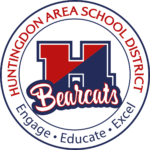By Kim Rieffannacht, Ed.D.
As schools transform into places where learners are developing skills that are useful in the information age, we realize that the learning environment need to look and feel. That environment is not created overnight and may look differently based on the facilitators, leaders, learners and community needs. The philosophy that all learners needs should be met every hour of every day is not a canned program or set of resources, but instead a process where stakeholders need to work together to create systems that help learners succeed at an individual level. Each learner should experience several things including: learning at his or her level, the ability to leverage his or her learning style, the opportunity to learn skill and content of high interest to him or her, the understanding of relevance of what he or she is learning, a feeling of being challenged, a feeling of being successful and the desire to return tomorrow (Crawford & Scott, 2017). These, for many, seem like lofty goals, but they are all characteristics of an ideal learning environment and have become possible with the infusion of technology into instructional best practices.
The cornerstone of the ideal learning environment is learners working at their own rate and level. If a learner has not mastered a prerequisite skill, it is very difficult for him or her to be successful at the next level. When individual needs are not at the forefront and groups of students are moved through material as a collective, skills are often missed or not mastered. Young people working on what they need provides them an opportunity to work independently and a place where they can find success by truly showing mastery. Their own rate brings up the necessity to mention that teachers need to facilitate growth, success and the rate of the learner’s progress. It was stated at a recent conference session I attended, that the rate of many teenage learners is non-existent. That is when facilitation, monitoring progress, placing supports in where necessary and ensuring there is a successful progression through skills and concepts becomes critical. A child’s pace may also differ, depending on the topic or skill. There is a delicate balance that needs to be found. Teachers can do this when they take the time to get to know each learner, how they learn best and their pace of learning.
Just as every learner works at a different rate, each learner’s most effective way of retaining information or mastering skills is different. There are three types of learning styles that are most prominent: kinesthetic, auditory and visual. There is a necessity to have an intentional conversation with teachers and learners about what each of these learning styles are and an increased awareness of how both learners and teachers acquire new information. It is helpful for a teacher to understand how they learn best to ensure that they are offering learners different pathways based on their best learning style, and opportunities to grow in their weaker styles. Learners need to be aware of their learning style so they can make choices that allow them to learn in the most meaningful way possible. This is information that will help learners walk through the rest of their life.
In as much as learners thrive in different styles of learning, there is also a need for learners to have a high interest in what they are learning. This may not happen every hour of everyday for every learner; however, as a system and as educators we can work to put more voice and choice into a learner’s day. Increasing education’s direct connect to learners will help increase interest and in turn motivation. The mastery of standards can be demonstrated in an number of ways. Learners should be encouraged to think critically and develop create solutions to problems that interest them. We talk about the individual learner choice, but we also have to connect learners and teach them skill of communication and collaboration within these creative solutions. Creative solutions to real world problems and giving learners choice is a natural way to promote relevance of learning to young people. Taking the standards, content and skills that need covered, and creating relevant pathways for learners to follow is a critical step in creating the ideal learning environment. Much of what is learned can be applied quickly.
The ideal learning environment, just as with any environment, will have a culture and a feel to it. The environment, interactions and activities should challenge learners by encouraging them to master skills, push the traditional classroom limits and solve problems that are typically not explored in a classroom. Learners should have multiple opportunities to feel success and demonstrate their mastery of content. These opportunities should help learners connect with their content and find the motivation that creates the desire to return the next day. These feelings do not happen overnight, or as a result of one or two things. Powerful intrinsic motivation is created in a new system that embraces each learner’s need with supportive teachers who intentionally design instruction around learner interests, style and rate of learning.
Everyone has experienced a time when they have been truly engaged in a task or material. That feeling is what we want to create for learners on a more consistent basis. Learners should want to come back to school each day, for reasons that are more than social. Teachers desire to get to know the young people coming into their room and provide opportunities that meet individual needs. These environments do exist and are possible. Stakeholders need to work together to maximize resources, support learning environments and facilitate learning for each individual.
References:
Crawford, P. & Scott, J. (2017). The Total Leader Embraces Mass Customized Learning: Module1 [PowerPoint Slides].
